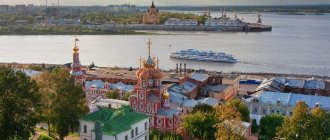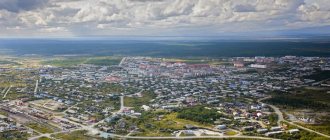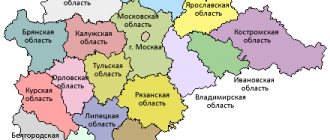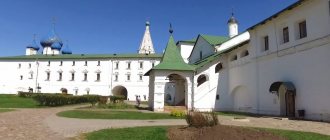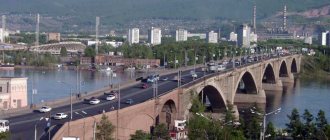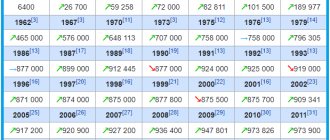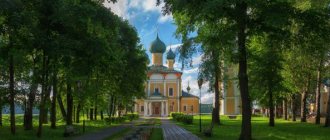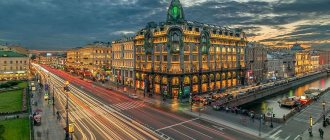Climatic conditions are varied. The sharply continental climate brings hot summers and little snow (sometimes frosty) winters. The average summer temperature ranges from 20-25 degrees. The period when warm weather persists in the region reaches 275 days a year. The average winter temperature does not fall below 12 degrees below zero. In the northern regions, winter frosts can reach minus 35 degrees.
The Black Sea significantly influences the climatic conditions. In areas adjacent to the sea, the summer heat is milder, and in winter the temperature is slightly higher than in other areas. Due to the northeast wind, winter weather in Novorossiysk can be severe: the wind speed sometimes reaches hurricane force, and the thermometer drops to minus 20 degrees.
Volgograd
Volgograd. One of the hottest cities in the Russian Federation. Located in the northern part of the country, near the border with Kazakhstan. In summer, daytime temperatures can easily cross the 40° division of the thermometer. In summer, it doesn’t rain often here, so the climate is reminiscent of neighboring Kazakhstan. Hot but dry weather attracts beach lovers. Winter without severe frosts, frequent thaws are possible. The record temperature was recorded at +42.6 °C. The average water temperature of the Volga in August is 26°C.
Crimea - is it worth considering?
Some clients of our company admit that they considered two options for moving - Sochi and the resorts of the Crimean Peninsula. Most still decide to give preference to Sochi, since the advantages of the Olympic capital are obvious!
- The low level of infrastructure development in Crimea is what repels us the most. There are few schools, few kindergartens, few well-paid vacant jobs;
- The average salary level in Crimea is from 20 to 25 thousand rubles;
- Medicine is poorly developed;
- There are certain problems with communications - the Internet is not available everywhere and not all stores still allow you to pay by card.
Of course, the resorts of Crimea also have positive aspects! Very picturesque nature, a large number of architectural monuments, relatively budget real estate prices.
Back to Contents
Maykop
Maykop is a southern city in Russia in the Republic of Adygea. Maykop is famous for its mild, fertile climate and warm weather in any season. The average annual temperature here is +11 degrees. In Maykop it is not particularly hot in summer, and not cold in winter. The summer period lasts about 180 days a year. If we talk separately about each season, then in winter the thermometer stays at around -4.9 ºС to +8.9 ºС. The absolute maximum temperature for winter was recorded in 2010 and amounted to +23.4ºС. In summer, the temperature ranges from +16 to +29 ºС. At the very beginning of the spring period in Maykop there are often strong winds that develop into entire dust storms. They are accompanied by heavy hail and multi-day downpours. As for ecology, it should be noted that Adygea has been becoming a leader in the ranking of Russian regions for the most favorable climatic and environmental conditions for several years.
Relocation options in the North Caucasus Federal District
In the North Caucasus Federal District, I would not consider the Republics of Dagestan, Ingushetia, Chechnya and Kabardino-Balkaria for moving. These are Muslim republics with strong national traditions. For example, in Chechnya, a kind person passing by in a car can stop and warn that it is better for a man not to wear shorts on the street.
The Republic of North Ossetia, although it is not Muslim and is quite different from other Caucasian republics, I would not consider moving to either. North Ossetia as a whole and Vladikavkaz look poor, unkempt and underdeveloped.
Republic of Karachay-Cherkessia
The Republic of Karachay-Cherkessia is located closer to the other North Caucasus republics to the Krasnodar Territory. The distance from Krasnodar to its capital, Cherkessk, is 345 km. 80% of the territory of the Karachay-Cherkess Republic is located in mountainous areas, so the ecology here is very good. In Karachay-Cherkessia, as well as in Adygea, there are thermal mineral springs. If someone is drawn to living among the mountains, then this region can be considered.
The climate here is moderately warm, winters are short, summers are warm, long, and fairly humid. The long duration of sunshine is also indicative. I have heard good reviews about moving to the mountain villages of Karachay-Cherkessia. And, according to my personal feelings, Cherkessk is an atmospherically very pleasant city; when we were there, we saw only joy and benevolent attitude from the locals.
Mountains and the village of Dombay in Karachay-Cherkessia
Stavropol Territory: Stavropol, Pyatigorsk
Another North Caucasus region that can be considered for moving is the Stavropol Territory. 80% of the population of the Stavropol Territory are Russians. There are 2 most outstanding cities in the Stavropol Territory - the center of the region, the city of Stavropol, and the center of the North Caucasus Federal District, the city of Pyatigorsk.
Stavropol
The population of Stavropol is 450 thousand people. Stavropol is located on the beautiful hills and valleys of the Ciscaucasia on the Stavropol Upland with extreme altitudes from 230 to 660 meters above sea level. One of the city streets is called “45th parallel”, indicating its exact latitudinal position. By the way, Krasnodar also stands on the 45th parallel.
Stavropol is called the “gate of the Caucasus”. A special feature of the city is that forest areas are adjacent to urban development. The city also has a lot of greenery, excellent air - this is what Stavropol can really attract.
The climate in the Stavropol region is southern, with a lot of solar heat and light. Winter in Stavropol is short, the average temperature in winter is about -5 °C. The disadvantage of Stavropol's climate is frequent strong winds, especially in February-March.
Panorama of Stavropol
Pyatigorsk
The population of Pyatigorsk is about 150 thousand people. Pyatigorsk is a balneological resort city, cultural and tourist center of the ecological resort region of Caucasian Mineral Waters.
Pyatigorsk is located between mountains; the highest point in the vicinity of the city is the peak of Mount Beshtau, 1401 meters high. This area is extremely rich in underground sources of mineral waters. Therefore, if you want to live among mountains, forests and mineral waters, then you can also take a close look at Pyatigorsk.
Mountains around Pyatigorsk
Kaspiysk
Kaspiysk is a small southern town of Russia, located on the shores of the sea of the same name. Kaspiysk, like other southern Russian cities, boasts relatively mild winters. The temperature in January-February rarely drops below -10 degrees. True, a damp, cold draft often blows from the sea, so the cold is felt more strongly. There is little snow falling and it melts quickly. Spring comes on time; cherries and apricots already bloom at the end of March. Summer in Kaspiysk is hot, and without air conditioning indoors is difficult to tolerate. The most exhausting period begins in mid-June and ends in August.
Makhachkala
Makhachkala is a city in the south of the Russian Federation, and is the capital of the Republic of Dagestan. Located on the shores of the Caspian Sea, not far from the Caucasus Mountains. The climate of the capital of Dagestan is temperate continental, characterized by relatively warm, mild winters and rather hot, dry, windless summers, which to some extent were ensured by the Caucasus Mountains and the sea. The average annual temperature in the city is +12.4°C. In Makhachkala, the climatic conditions are difficult, although a warm period prevails. The dry summer period is difficult for people with poor health, and temperature changes in the spring will not leave weather-sensitive residents alone.
Relocation options in the Southern Federal District
The Astrakhan region, Volgograd region and the Republic of Kalmykia are not considered by me for moving, since there are warmer and more prosperous places in the Southern District.
Rostov region
The administrative center of the entire Southern Federal District and also the Rostov region is the city of Rostov-on-Don. Rostov-on-Don is the largest city in the south of Russia, its population is more than 1.1 million people. Rostov is located on the banks of the Don River, the relief of the territory of Rostov-on-Don is flat-ravine in nature.
The city is a large administrative, economic, cultural, scientific, educational, industrial center and the most important transport hub in the South of Russia. The climate of Rostov-on-Don is moderate continental. Winters are mild and with little snow, snow cover lasts for about 10-25 days on average. The average January temperature is −3 °C. Summers are hot, long and dry.
According to my personal impressions, Rostov is a more creative, progressive and industrial city, compared to Krasnodar, for example. Just 50 km from Rostov is the Sea of Azov. Rostov Airport is a major air hub, built in 2018. Therefore, Rostov-on-Don deserves attention for a possible move. It should be taken into account that it is colder in Rostov than in Krasnodar, this is especially noticeable in winter.
Panorama of Rostov-on-Don
Krasnodar region
The Krasnodar region is the most popular region for moving to the south, as it is the warmest region of Russia.
Krasnodar and its surroundings
There are 2 large articles on moving to Krasnodar on our website: “Moving to Krasnodar, pros and cons” and “Life in Krasnodar - a woman’s view of moving to this city.” In short, Krasnodar is the center of the Krasnodar region and the historical and geographical region of Kuban, located in the valley of the right bank of the Kuban River, almost in the center of the region, at a distance of 120 km from the Black Sea and 140 km from the Sea of Azov.
The terrain of Krasnodar is flat, the population is just under a million people. The climate here is mild continental, without stable snow cover in winter and with long, hot summers. The average duration of the climatic winter is 40 days, the average winter temperature ranges from +7° to −5°.
Based on all this, Krasnodar has become the most popular place in the south for people from all over Russia to move for permanent residence. Among the minuses of Krasnodar, one can note a certain rusticity, which is largely the result of a large private sector, even in the city center. Also, wine, barbecue and shopping centers are more important here than theaters and museums.
Central square of Krasnodar
Those who are looking for a quieter and less crowded warm place to live can take a closer look at the outskirts of Krasnodar. There is a choice among the nearest villages: Elizavetinskaya, Novotitarovskaya, Dinskaya, Starokorsunskaya, Severskaya and a couple of dozen smaller villages next to them, located 5-30 km from Krasnodar. As well as small cities: Slavyansk-on-Kuban, Krymsk, Abinsk, Korenovsk, Timashevsk, Kropotkin, Tikhoretsk, located 60 - 160 km from Krasnodar.
People move to all of the listed villages and cities from all over Russia. The villages are especially popular among those who want to live in their own home and have a garden.
Panorama of the village Dinskaya
Black Sea coast: Novorossiysk, Sochi, Tuapse, Gelendzhik, Anapa
The Black Sea coast undoubtedly attracts many with its beauty and sea, but the cities of the Black Sea coast cannot boast of developed modern urban life.
Among the above 5 cities, only one of them can truly be called a city, in the sense that industry is at least somehow developed here and there is the possibility of year-round stable work, etc. This is the city of Novorossiysk. The rest of the cities on the coast are essentially tourist settlements, making money mainly from summer tourism.
Grozny
Grozny is one of the southernmost cities in Russia. The climate in Grozny is almost the same as in all other cities in southern Russia. There are mild winters and very hot summers. In winter, the thermometer rarely drops below -15, and in summer it often exceeds +35. From the unbearable heat you have to hide in air-conditioned rooms or go to the river bank. In Grozny the wind blows very often, so it is always very dusty outside. They are felt especially strongly in the spring, after the first warm days appear. Precipitation, which is so expected in the summer, is not a frequent occurrence here. In general, Grozny has a very mild climate, except for the hot summers. In winter it is not cold here, in spring the sun shines most days here, and the temperature ranges from +10 to +20. Autumn in Grozny is a milder continuation of summer, the average temperature drops, it rains more often, but the residents of Grozny are not in a hurry to wear warm clothes in the fall.
Anapa, Gelendzhik and Novorossiysk
When it comes to the question of where to live cheaply by the sea, these three cities often appear. Yes, real estate prices here will be lower than in Sochi, but this all correlates with the level of infrastructure development and standard of living in general.
Anapa is a city that lives only in the summer season. Here, just like in Sochi, it is hot in summer and warm in winter, but strong winds due to the low altitude of the mountains spoil the whole picture. Another disadvantage of Anapa is the “blooming” of the sea. The coastal part is quite shallow, so in summer, due to the heat, in order to swim normally, you will have to move quite far from the shore.
Gelendzhik is a city without its own airport and train station. You can only get here by car through a serpentine road. The nearest airport is in Krasnodar, the train station is in Novorossiysk. In addition, there are few educational institutions here, and in general the level of infrastructure development leaves much to be desired.
Novorossiysk is a city with developed infrastructure, but the climate and ecology leave much to be desired. Winds constantly blow here, carrying dust from the cement plant. Beautiful nature, good transport links, a large seaport - these are, perhaps, all the advantages of the city. It is widely believed that Novorossiysk can debunk all ideas about whether it is good to live at sea. We think this is too strong a statement, but it's up to you to decide!
Of course, on the coast, there are even smaller cities and towns - Tuapse, Dzhubga, Abrau-Durso, Kabardinka. They can also be considered for moving to permanent residence, but do not forget that the infrastructure in them is very primitive and they are more suitable for seasonal holidays.
Back to Contents
Dombay
Dombay is a city that, like many southern Russian cities, is part of the Republic of Dagestan. Holidays in Dombay will be an ideal choice for those who love the sun, but cannot tolerate the heat; the number of clear days - the envy of any European mountain resort - reaches 320 days a year. The climate of Dombay is mild, winters are snowy but warm, the average winter temperature is minus five degrees, but often during the day the air warms up to fifteen degrees Celsius. And this is great - because you can ski and sunbathe at the same time.
Simferopol
Simferopol is a city in the center of the Crimean Peninsula, on the Salgir River. One of the two (along with Sevastopol) largest cities in Crimea, the economic and cultural center of the peninsula.
Simferopol is the capital of the Republic of Crimea and the center of the urban district. The city is also the center of the Simferopol region, but is not part of the latter, being a city of republican subordination. The population of the city is 341,527 people. (2020)
Volzhsky
Krasnodar
Krasnodar is one of the ten most southern cities in Russia. Located on the right bank of the river. Kuban, just 150 km from both seas - the Black and Azov - Krasnodar is now the capital of Kuban, a major administrative center of the South of Russia and, in fact, the “gateway of the Caucasus”. It is noteworthy that the city is located almost in the middle between the North Pole and the equator, exactly at the 45th parallel. This parallel is also called the “golden line” or “life line”. It is believed that at this latitude the conditions for human life are most favorable.
Volzhsky
Volzhsky is a city in the Volgograd region. Volgograd satellite The city of Volzhsky forms an urban district. One of the largest industrial cities in the Lower Volga region, the second largest in the region and 60th on the list of cities in Russia. Population: 323.6 thousand people. (2019). Together with Volgograd, it forms the core of the Volgograd agglomeration, which has a total population of 1.3–1.4 million people.
Novorossiysk
Sochi
Sochi is one of the southernmost cities in Russia. Sochi is often called the resort and summer capital of Russia. The city occupies the Black Sea coastal strip of the Krasnodar Territory with a length of 145 km and includes resort areas: Adler, Ashe, Vardane, Golovinka, Dagomys, Krasnaya Polyana, etc. The warm Black Sea, mild climate and evergreen landscapes attract guests here both in summer and winter. In addition to the usual beach holidays, Sochi offers sanatorium-resort treatment in various directions.
Astrakhan
Astrakhan is often called the southern outpost of Russia, as well as the Venice of the South and the Caspian capital. It was founded around 1333. The city's favorable location made it a major transport center. From the capital of the Astrakhan principality, the city, after joining Russia, turned first into a provincial center, then into the capital of the region. Not only its favorable location had a great influence on the development of Astrakhan. A huge role was played by different cultures and religions, which periodically replaced each other throughout the history of the city. As for the climate of the southern city, it is quite warm and dry.
Derbent
Derbent is the southernmost city of Russia, located on the shores of the Caspian Sea. It belongs to the resort towns. In Derbent, thanks to the temperate continental climate, almost all days in summer are sunny. Temperatures often reach +35°C in the shade. On such days, the townspeople are saved only by the proximity of the sea, and they do not get out of the water for whole days. Fortunately, the swimming season lasts from May to September, but even in October you can see people swimming in the sea. The coast of the Caspian Sea is not covered with pebbles, but with yellow sea sand with small shells. There is also a warm and long autumn, which lasts until the end of November with temperatures above zero.
https://www.youtube.com/watch?v=Y9bJ05neyiU
19 14


